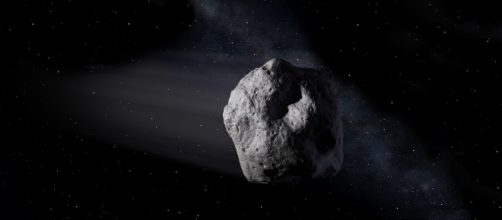Just to offer some perspective that worse things are possible than a persistent hurricane, Newsweek reports, courtesy of NASA, that a 2.7-mile wide asteroid named Florence, named after Florence Nightingale, will hurtle past the Earth at a distance of 4.4 million miles. That distance is just down the street in cosmic terms. Florence is half the diameter of the asteroid that killed the dinosaurs, but if it ever hit the Earth it would be the worst day in the lives of every living being and for most the last one.
What is Florence?
Florence is a stony asteroid that orbits the sun at a distance of between one and 2.5 astronomical units (an astronomical unit is the distance between the Earth and the Sun.) Though the asteroid is considered a potentially hazardous object, due to its passing close to our planet from time to time, it will not pass as close again until about the year 2500.
Florence was discovered in 1981 by an American astronomer named Schelte ‘Bobby’ Bus while he was working at the Siding Spring Observatory in Australia.
Observations of Florence
NASA is taking the opportunity of Florence’s flyby by making observations of it. The space agency will be using the radio telescope at Goldstone in California and the Arecibo Observatory in Puerto Rico to map out the asteroid’s surface details. The space agency hopes to get an idea of what it looks like up to 30 feet and to get an accurate reading of the asteroid’s size and shape. Florence may even be a binary system; two smaller asteroids gravity locked together as it hurtles through the solar system.
Amateur astronomers should be able to spot Florence easily, despite some interference from moonlight.
The asteroid should achieve peak brightness on August 31 and September 1. In the night sky, it will pass south to north through the constellations Capricornus, Aquarius, Delphinus, Vulpecula, and Cygnus.
Asteroids as a threat and an opportunity
The flyby of Florence reminds us of both the threat and the opportunity that Earth approaching objects represent. The old saying is that EAOs are God’s way of inquiring how the space program is coming along. Big rocks from the sky have fallen from time to time, causing untold destruction, including the one that wiped out the dinosaurs. Humans are the first species that have the capability to do something about it, by diverting them out of the way.
Asteroids are also an opportunity.
Many of these great rocks in the sky have valuable minerals that can be mined and used for useful products. The idea of mining the sky is rapidly passing from the realm of science fiction to a practical business model.


